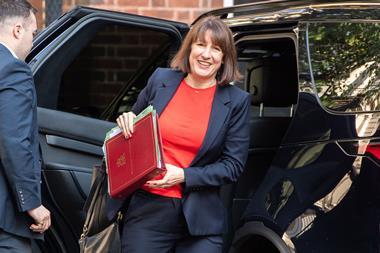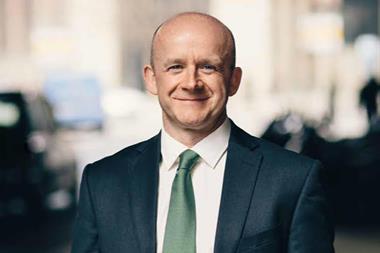Paul Lee, Redington’s head of stewardship and sustainable investment strategy, argues that asset managers making dedicated sustainable investment hires isn’t necessarily the best use of resource when it comes to ESG engagement
Our industry faces immense challenges to deliver on the commitments necessary to transition towards a more sustainable future.
Asset managers have been making real progress towards integrating sustainable investment (SI) considerations into their overall decision-making and, as part of this, a growing number have been making specialist hires to oversee and drive engagement with sustainability risks and opportunities.
In fact, our latest research showed that some 74% of managers now have a dedicated responsible investment headcount, a 15% increase year on year.
And perhaps more significantly, we have seen a 21% increase in the number of businesses that are now linking remuneration to the integration of ESG issues, now covering 70% of the respondents to our survey.
No-one can deny that firms moving to incentivise sustainability issues is positive, but this isn’t necessarily the best measure of progress. Despite these figures, more than a quarter (26%) of the managers we engaged with were still unable to evidence ESG considerations having influenced actual buy decisions over the past six months.
All of this begs the question – are dedicated RI specialists really the best use of resource?
Making specialist hires is the tip of the iceberg. When we’re assessing managers, what we really want to see is that they are effectively integrating financially material ESG considerations into their investment process and are able to act as a responsible steward of capital.
This means that firms must be able to demonstrate how all resource is directed towards driving positive, concrete action.
The power of the portfolio manager
If a manager wants to ensure a tangible connection between investment decision-making and engagement, it makes very little sense to have the responsibility stopping solely with the head of stewardship or equivalent role.
Our research shows that where portfolio managers are expected to take responsibility for stewardship matters, firms deliver engagement that’s far more focussed on the issues material to the future success of the engaged company.
Despite this, our 2021 Sustainable Investment Survey showed just 31% of firms currently have portfolio managers in charge of engagement activity.
Ultimately, having someone who appreciates and understands the challenges and opportunities specific to each asset class – such as ownership structures, data availability and stewardship opportunities – driving the engagement activity could make all the difference.
We see there being two key ways for a portfolio manager to make an impact: engaging for information or engaging for change.

Engaging for information provides an open dialogue for research and ongoing monitoring, without any specific agenda for change. Typically, this involves a portfolio manager asking questions and seeking insight, but they will rarely express a view on issues. It helps to lead to better investment decisions, more informed by ESG insights.
Engaging for change, on the other hand, is purposeful dialogue used to influence positive change with a defined agenda and objectives. This tends to involve a two-way dialogue with the portfolio manager making the case for change. That should influence better decision-making by the companies (or other assets) that are invested in.
Both forms are essential for transforming attitudes and actions towards a more sustainable future, but require strong relationships and a level of influence that, generally, only a portfolio manager has.
Where do SI specialists add value?
There’s no doubt that dedicated stewardship teams can go a long way to helping managers keep a disciplined focus on the engagement agenda and ensuring that long-term issues are not neglected simply because investment performance remains positive.
However, they must maintain an ongoing and open dialogue with the investment teams if they are to ensure that ESG and stewardship issues are genuinely integrated into the investment process, enabling policies to translate into concrete action.
In regard to specific roles and responsibilities, a core part of any dedicated SI role should be the continual monitoring, evaluating – and revising – of best practices and outcomes.
Over the next year, we’d really like to see firms raising their game in terms of how they are using tools and technology to analyse the impact they are having and any potential areas for improvement.
Aside from this, SI specialists will be ideally placed to engage in industry initiatives and partnerships, developing ways for the manager to share knowledge and learnings with sustainability leaders.
Through actions such as these, firms will be able to provide a tangible demonstration as to how specialist resource is being used to drive the firm’s engagement strategy.
Being able to report on additional staff numbers tells one story, but delivering genuine change through the investment process is the best way to unlock the true value opportunity from ESG and stewardship and bring us one step closer to changing our industry for the better.
































No comments yet